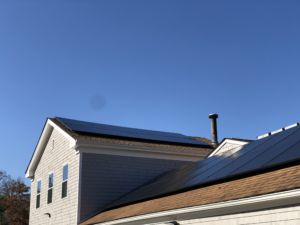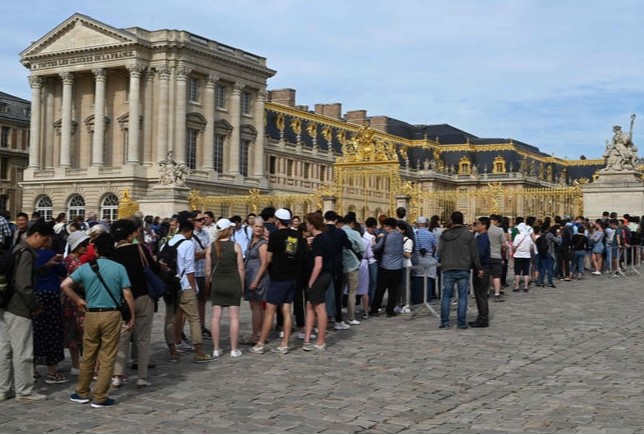
Hey team, Adam here. Welcome to our 2021 blog here at Whaling City Solar. This unique “Engineers View of the Big Picture” series of articles are a history of how my wife and I became convinced to put solar panels on our house and why I’ve chosen the world of solar energy for my profession. I genuinely believe you should take a look how a solar system pays for itself before writing it off as a too expensive or a trend, but I also want to show why. More so than our other articles, this series is written in my language – half Dad and I’s engineering background, and half Mom’s teaching background. Both of whom taught me to never stop sharing knowledge.
Chapter 4 – The Great Council of Residential Solar (Part 1)

Welcome to Chapter 4! If you haven’t been following along our article series, may I suggest starting at Chapter 1 and catching up first.
We left off in Chapter 3 where we learned how the basic economic principle of levelized cost is applied to a solar project. If the project were as easy and inexpensive as switching out incandescent bulbs for LEDs, everyone would have solar on their house already. In reality quite a few parties ,both public and private, have to work together to agree on a number of parameters for each and every solar project constructed in the USA. Today we’re look in on an average homeowner, perhaps a bit like yourself, who is about to learn few things about how the big picture works.
Opening Scene
Bob had been avidly consuming well written, long-format solar blog content and decided to move forward with installing an array. He and his wife own an area average $265,000 home on the Southcoast of Massachusetts. They have an area average $150/month electric bill, are an average family of 4, and they do their best to save a little each year (about $20,000 in household savings). Average Bob is pretty average.
After getting more than one quote, the best price he found was $20,000 for a 100% offset system from his local solar installer with the note that it’s “$10,000 after incentives”. They booked a date and sit down to sign the contract.
Bob: Thanks so much for all your help proposing this system, I’m so excited to get started on this project! I have some questions first on a few items if that’s ok?
Contractor: Of course! It’s impossible to put every detail in our proposals, there’s a lot of moving parts to this process. Ask away.
Bob: This price shows before and after these incentives. How does this work? Can you take this amount of upfront or send me the rebate check after a month?
Contractor: Unfortunately no, by law the homeowner must file their own taxes and setup their own state incentive direct deposit. But I’m happy handle all the applications and set you up with everything you need.
Bob: Ok thanks. The $20,000 needed upfront is impossible for me float right now, to be honest the $10k was probably too high as well. You said you had a few financing options available. One on your proposal said $120/month for 10 years, which saves me 30 bucks a months until the the loan is paid off. I assume I’ll be paying you since it’s your name here on our contract and you’re doing the work?
Contractor: Not exactly, our lending partners only work directly with the homeowner to provide the funds as a lump sum upfront. That sum then goes to me the contractor for my labor, materials and overhead the same as if you were paying cash. But I’m happy to handle all the applications and set you up with everything you need.
Bob: Ok….how long is this whole thing going to take? Our neighbors had some pretty long delays on their solar system, including waiting over a month after the array was built to turn it on.
Throughout the conversation Bob couldn’t deny he found his excitement dwindling. All of these extra details suggested to him that there’s quite a few details that were out of his friendly solar contractors control. Why does the system work like this? Who makes all these decisions? Who are the mystery players behind the curtain? What the heck is PTO??
As Bob signed his installation agreement, he was surprised to hear a great gong ring throughout the land. His town doesn’t even have a gong.
Contractor: [matter-of-factly] Time to assemble the Great Council, meet me in 3 days downtown.
Bob got a sinking feeling in his gut he was about to descend into another, slightly too long, creative blog article.
The Trip Downtown

Contractor: The Great Council is how we determine how your solar project is going to exist on your home for the next 25 years. You see, while it does live entirely on your property, its very existence has effects on others as well. The council is made of representatives who speak for the groups of people who could be negatively, or positively, affected by details of your solar array.
Bob: Plus I don’t have the money to pay you yet.
Contractor: Plus you don’t have the money to pay me yet. Very astute.
Bob looked around and couldn’t believe the size of the line waiting to get into the chamber.
Bob: Look at this line! All these people can’t seriously be here for solar arrays?
Contractor: There’s over 100 solar arrays being signed and installed per week in Massachusetts, so yes, these folks are busy. Some council members don’t need to look at every single project, and the ones that do have a large staff. The volume of solar interest has exploded in the last 5 years, so fast that this system is starting to look a little…antiquated.
After what feels like forever Bob made it inside the main chamber. As you look around the table your contractor points out the big players in attendance:
- The Grand Vizier of Eversource
- The Twin Princes of City Hall
- The Governor of Massachusetts (shouldn’t he be somewhere else?)
- The POTUS (???)

Sitting together at a separate table Bob saw long lines waiting to speak to 3 finely dressed individuals. The contractor identified them as the infamous Solar Finance Guild:
- The Empress of Mosaic Lending
- The Kaiser of Baycoast Bank
- The Duke of Sunova

Contractor: That’s who we’re going to talk to first.
The Duke of Sunova
Contractor: Remember Bob, it doesn’t matter to me which one of these institutions you partner with. In fact there are 5 more tables like this in the next building full of other guilds. These 3 do the most business because they have the best terms for what each offers, and have been invited into the Grand Council.
All three seemed fairly eager to meet Bob as he approached the table. He started on the left, with a gentleman who if possible was even better dressed than the other two. The fellow was clearly doing quite well for himself.
Duke: Welcome friends! I am the Duke of Sunova, slayer of fossil fuels and savior to the climate crisis. My kin have fought mighty wars and have slain the great dragon Sungevity. I bring wealth to all those who partner with me, and have heard that many experience better complexion and hair as well!
Bob: I’m Bob.
Duke: Well…Bob…you’re in luck! Would you be interested in making an even lower payment than $120/month for your electricity bill? And have zero maintenance or monitoring responsibilities at all?
Bob: Go on.
Duke: At Sunova what we do is buy the whole system from you so you have nothing to worry about. In exchange you just pay us $100/month for the lifetime of the system. You have roof space, we have money and a love for the environment, what a match! No money needed today, in fact I’ll pay the first 6 months of payments for you while you see that system is up and working! Let’s get you signed up here yes? [brings out a 42 page contract]
Bob: That sounds like a good deal, I like having no responsibilities, but this 25 year contract looks like it has a lot of other stuff in it. What’s the rest of this language for?
Duke: You know, just lawyer stuff. Like how if the electric rate goes up, we are entitled to raise our rates a little bit too. The requirements of how the arrangement works if you sell your house. Remember you’re practically in a 25 year contract with your utility now anyway, why not just pay us instead and save money along the way? Come on let’s get that pen to paper.
Bob: What about the $10,000 of solar incentives? I get those too?
Duke: No, but our customers love it that way. By buying the system off of you, we attain the rights to visit the Great Council on your behalf. We do the paperwork to claim the tax credit and state payments for you, and build it right into your monthly payment. Why do you think it’s so low? I don’t mean to be rude but there’s a big line, this is a great deal and you can see that. Why not just sign and then you can get out of here and back to everything else you were supposed to do today?
Bob turned to his contractor.
Bob: Should I do this one? These savings will at least pay for Christmas each year, its good for the environment, and seems a lot simpler.
Contractor: First, let me reiterate that it really doesn’t matter to me. The Duke has always paid me on time and in full, he’s great to work with on my end. I’d at least talk with the other two first. To me, $100/month for 25 years is still a $30,000 contract, sorry, $29,400 with 6 months free. Your call about how much time you want to spend researching the best deal.
Will Bob find a better deal? Will the other Finance Guild members have the same flair for the dramatic as the Duke? Will the president still be there when they get to the main chamber??? Stay tuned for the next chapter in our journey where we follow Bob’s journey through the rest of the Guild and the Great Council!
Finding our content interesting? We’re realizing there are more of you out there than we thought! So because someone asked, here’s a subscription form where you can get an update every time we post a new in-depth article like the one you just read.

